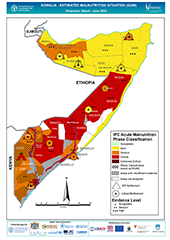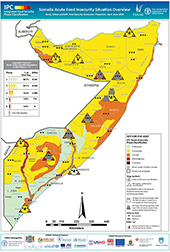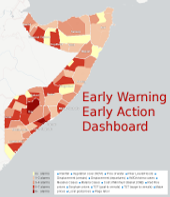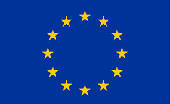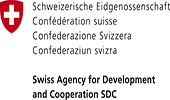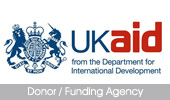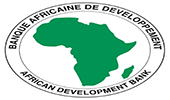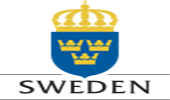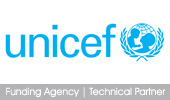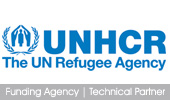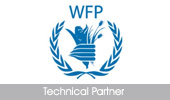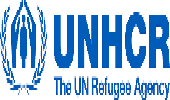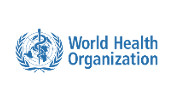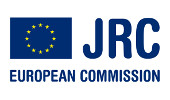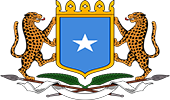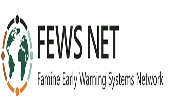FSNAU In Focus
-
FSNAU Releases Post Deyr 2014/15 Food Security and Nutrition Analysis Technical Series Report
March 5, 2015Read More ....
Key Findings
Despite improved food security following the...
-
FSNAU-FEWS NET Technical Release, January 29, 2015
January 29, 2015Read More ....
Over 730,000 people across Somalia face acute food insecurity despite improvements in some areas
Nearly 203,000 children are acutely malnourished
January 29, 2015, Nairobi/Washington – Despite improved food security following the Deyr harvest, improved livestock conditions, and mostly stable staple food prices, a large number of people across Somalia will be acutely food insecure through June 2015. Many children remain acutely...
-
FSNAU preliminary outlook for the first half of 2015 indicates only a slight improvement in the overall food security situation in Somalia
December 18, 2014Read More ....
Based on the Food Security and Nutrition Analysis Unit’s (FSNAU) preliminary outlook, acute food insecurity is expected to persist in most parts of Somalia although slight improvements are expected, predominantly in pastoral and agropastoral areas of the country. Based on the Integrated Phase Classification (IPC) acute food insecurity severity scale, a modest decline in the overall number of people in Crisis (IPC Phase 3) and Emergency (IPC Phase 4) is expected in the first half of 2015. Most of the population in urban and rural livelihoods of...
-
Over one million people in Somalia face acute food insecurity as food crisis worsens
September 2, 2014Read More ....
A 20 percent increase since January 2014
September 2, 2014, Nairobi/Washington – The gradual recovery and gains made since the end of the famine in 2012 are being lost as poor rains, conflict, trade disruptions and reduced...
-
FSNAU releases the quarterly Food Security and Nutrition Brief - Focus on Post Gu Season Early Warning
June 25, 2014Read More ....
Based on ongoing monitoring activities in addition to the results of rapid preliminary Gu (April-June) season field assessment carried out in June 2014, the food security situation is projected to deteriorate in Somalia in the post-Gu period (July-December 2014). Within the context of limited humanitarian assistance, the major factors contributing to the deterioration of the food security situation include below average harvest prospects as a result of late and erratic Gu rains, rising food prices, armed conflict and associated displacements as well as disruptions in farming and...
-
Global Food Security Journal Special Issue on the Somalia Famine of 2011-2012 (available online until 25 August 2014)
May 27, 2014Read More ....
In the context of the ongoing discussion on the current food security crisis in Somalia and it's likely trajectory, it would be important to highlight the causes and manifestations of the 2011 famine and the lessons learned from it in terms of preventing future famines in Somalia. These are documented in the Special Edition of the Global Food Security Journal which Elsevier, the publisher, has now made freely available on their website until 25 August 2014. The link is: Global Food Security Journal Special...
-
Delayed rains, persistent insecurity spark renewed crisis concerns in Somalia
May 2, 2014Read More ....
Nairobi, 2 April 2014 - A combination of delayed Gu (April-June) rains, rising food prices and persistent insecurity in Somalia is likely to worsen the country’s food security situation in the coming months, experts have warned. Food security in the Horn of Africa nation is likely to deteriorate particularly in southern regions of Lower and Middle Shabelle Regions (major maize producing regions in Somalia), due to persistent insecurity and displacements, delayed current season rainfall, and their impacts on agricultural labor demand and staple food prices....
-
FSNAU Releases Post Deyr 2013/14 Food Security and Nutrition Analysis Technical Series Report
March 31, 2014Read More ....
In November-December 2013, the FSNAU in collaboration with counterpart government line ministries, institutions and several partner agencies carried out food security and nutrition assessments across Somalia. The purpose of the assessment was to gather information required for food security and nutrition situation analysis of rural populations and internally displaced persons (IDP). The livelihoods based analysis provided a snap-shot food security situation analysis for January 2014 and projections for the February to June 2014 period. The food security analysis followed a standardized...
-
FSNAU Releases Post Deyr 2013/14 Nutrition Analysis Technical Series Report
March 24, 2014Read More ....
The nutrition status of children under the age of ï¬ve is generally accepted as one of the best indicators of prevailing poverty and food insecurity in the region/country. The Food Security and Nutrition Analysis Unit (FSNAU) provides a snapshot of current nutrition situation in Somalia through biannual assessment of nutrition status. Between November 2013 and January 2014 (Post Deyr), FSNAU conducted 40 nutrition surveys across Somalia covering all regions & livelihood zones and assesses nutrition status of 27, 581 children (6-59 months). Twenty seven of...
-
FSNAU Post Deyr 2013/14 Food Security and Nutrition Analysis: Key Messages
February 3, 2014Read More ....
Nairobi, 03 February 2014 - FSNAU released its Post Deyr 2013/14 Food Security and Nutrition Analysis findings for Somalia and the following were the key messages in the presentation:
- Nearly 860,000 people remain acutely food insecure and require urgent humanitarian assistance over the next six month period – a majority of them are IDPs (75%).
- Over 2 million additional people beyond those requiring urgent assistance are classified as Stressed (IPC Phase 2); their food security remains fragile and vulnerable to any...
